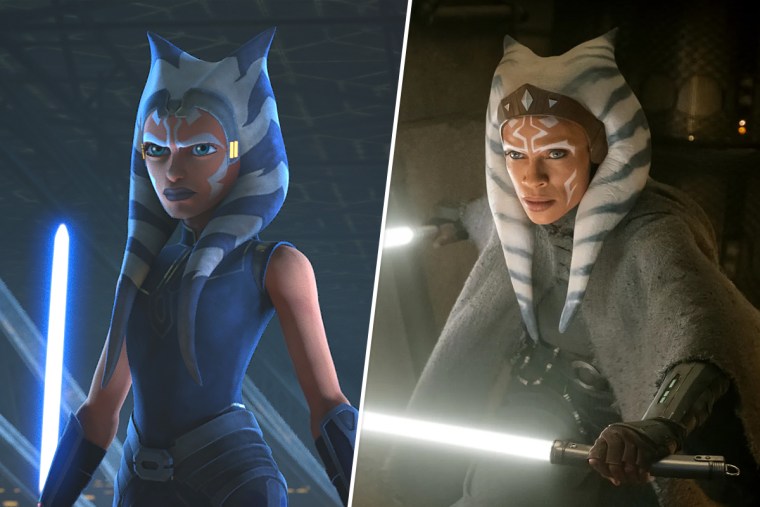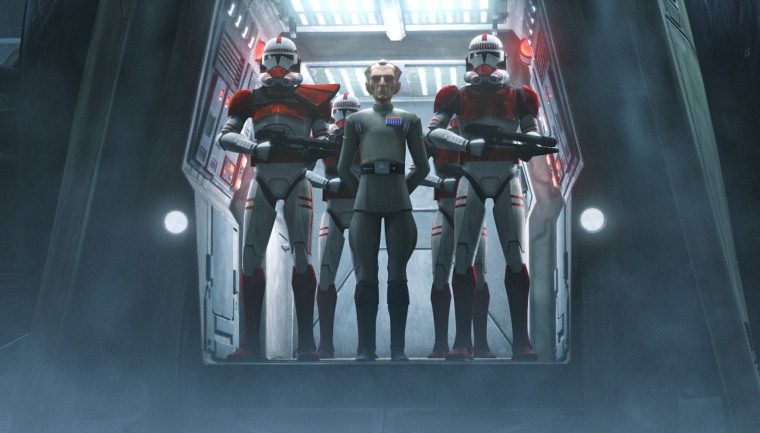The animated “Star Wars” show that debuts Tuesday on Disney+ revolves around the members of Clone Force 99, an elite squad of rough-and-tumble mercenaries who go on daring missions.
Even if you’ve seen every “Star Wars” movie dating back to Jimmy Carter’s administration — even the prequels, even the spin-off about Han Solo, even the sacrilegious 1978 holiday special — that plot outline may not ring any bells.
That’s because the central characters on “Star Wars: The Bad Batch” were first introduced in a project outside the foundational nine-installment film saga — in this case, “The Clone Wars,” an animated series that was cherished among die-hards yet never grew into a national phenomenon.
But the show might nonetheless play an outsize role in the future of the “Star Wars” franchise, providing Disney, the corporate owner of Lucasfilm, with relatively untapped characters and storylines it can mine for a seemingly endless cycle of original movies and shows, including content it drops on the annual “May the Fourth” commemorative day.
It would mirror the trajectory of the series of interconnected Marvel films, which started with familiar names (Iron Man, Captain America) before burrowing deeper into lesser-known entities, such as the Guardians of the Galaxy or the heroes of Chloé Zhao’s upcoming “Eternals.”
“Hollywood studios aren’t trying to start new franchises. They’re trying to revitalize old ones. It’s all about keeping the golden goose delivering and proliferating the ‘Star Wars’ universe as much as possible,” said Caetlin Benson-Allott, who teaches film and media studies at Georgetown University.
“We’re in an era where the idea of a ‘transmedia universe’ is popular, where fans are required to do some sleuthing to see how all these disparate characters and storylines are connected,” Benson-Allott said, likening the model to a giant jigsaw puzzle.
“The Clone Wars” has already figured into “The Mandalorian,” the first live-action “Star Wars” series. The show, a neo-Western about a masked bounty hunter and the green moppet known as “Baby Yoda,” helped turn Disney+ into a smash success and opened the door to more franchise world-building.
Ahsoka Tano, a Jedi played by Rosario Dawson in the second season of “The Mandalorian,” was introduced in “The Clone Wars.” The same was true of Bo-Katan Kryze, a warrior voiced by Katee Sackhoff on “The Clone Wars” and played by the same actor on “The Mandalorian.”
Dawson’s role in the expanding franchise isn’t limited to a guest spot on “The Mandalorian,” though. She will play the character again in a spinoff series, “Ahsoka,” that is slated to debut on Disney+ in 2022.

“The Mandalorian” is likewise filled with obscure proper nouns pulled from the “Star Wars” books that have long served as narrative connective tissue between the movies. Timothy Olyphant’s character, Cobb Vanth, first appeared in a trilogy of novels, for example.
Incidentally, “Star Wars: The Bad Batch” could prod some casual fans to explore all 133 episodes of “The Clone Wars” that are conveniently available on Disney+, keeping subscribers glued to a platform that competes with all the other streaming players for market share and cachet. (The show premiered on Cartoon Network in 2008, moved to Netflix six years later and then landed at Disney+ last year for a seventh, final season.)
“There’s so much fragmentation of attention, so intellectual property with built-in audiences is incredibly valuable and a way to retain viewers,” said Gabriel Rossman, an associate professor at UCLA who specializes in mass media.
The possible wave of renewed appreciation for “The Clone Wars” would likely be gratifying to fans who cherish the series for its complex characterizations and stylish visuals.
It was probably inevitable that Lucasfilm would look beyond the confines of the original nine-film series, known as the “Skywalker saga,” after J.J. Abrams’ “The Rise of Skywalker” in 2019 wrapped up an intergenerational narrative that began with the inaugural blockbuster in 1977.
In that sense, “The Clone Wars” is just one entry in the “Star Wars” canon that might become increasingly essential to understand the future of the franchise.

